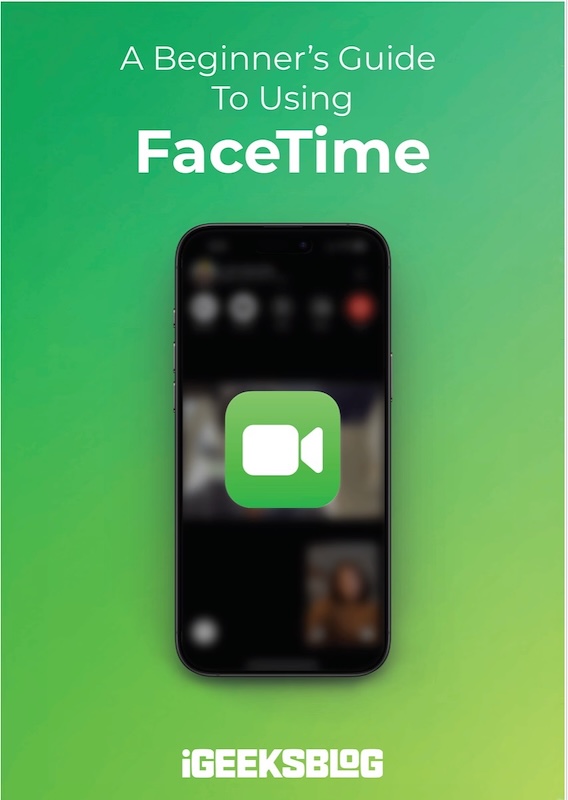
FaceTime Like a Pro
Get our exclusive Ultimate FaceTime Guide 📚 — absolutely FREE when you sign up for our newsletter below.

FaceTime Like a Pro
Get our exclusive Ultimate FaceTime Guide 📚 — absolutely FREE when you sign up for our newsletter below.
Explore key differences between Apple’s M5 Vision Pro and M2 Vision Pro headsets and decide which one is worth your money.
When the first Vision Pro launched with the M2 chip, it turned heads for its futuristic design and immersive experience. Now, Apple’s back with a refreshed version powered by the M5 chip, promising faster performance, smoother visuals, and better comfort. But how much better is it really? And should you upgrade or buy the new one?
In this article, we’ll compare M5 Vision Pro vs. M2 Vision Pro, walk through the key upgrades, and help you decide which one makes sense for you.
Let’s first get a overview of the big differences and similarities between the two.
| Feature | Vision Pro (M5) | Vision Pro (M2) |
|---|---|---|
| Chip | Apple M5 (10-core CPU, 10-core GPU, 16-core Neural Engine + Neural Accelerators) | Apple M2 (8-core CPU, 10-core GPU, 16-core Neural Engine) |
| Memory bandwidth | ~153 GB/s | ~100 GB/s |
| Display refresh | Up to 120Hz refresh, plus ~10% more pixels | Up to ~100Hz max refresh |
| Strap / headband | Dual Knit Band designed for better comfort & balance | Original band (Solo Knit) |
| Battery life | ~3 hours video playback | ~2.5 hours video playback |
| Weight (excluding external battery) | ~750-800g (26.4-28.2 oz) | ~600-650g (21.2-22.9 oz) |
| Launch price | Same launch price: US $3,499 | US $3,499 (256 GB base) |
Now let’s walk through each major area in more detail.
Here I have explained the differences based on specifications so you can easily decide what fits your requirements.

At first glance, both headsets look extremely similar. You’ll get the same curved front glass, same dual-micro-OLED setup, same Light Seal and Light Seal Cushion. Apple hasn’t overhauled the chassis. But there are two interesting things to note:
Build materials and finish remain luxurious so the premium feel is in both. If you already own the M2 version, the design difference is not persuasive. You can also buy the Dual Knit Band ($99) for your old Vision Pro for added comfort.
This is where the biggest performance jump comes. Apple upgraded the lineup only after 1.5 years yet it features an Apple Silicon three generations ahead.
More CPU/GPU muscle means the Vision Pro M5 can handle heavier spatial computing workloads, smoother graphic rendering, more advanced Apple Intelligence features on-device, and compatibility for visionOS 26 features.
If you’re a developer, gamer, or power user, this difference matters. However, if you’re using the device only for media viewing or casual AR/VR, the M2 is still very capable.
Both headsets feature high-end dual micro-OLED panels, extremely high pixel counts (≈ 23 million pixels) and a rich color gamut. Here’s what the upgrade brings:
When watching immersive media, virtual monitors, or mixed-reality experiences, you can immediately notice smoother motion, less strain when reading small text, and a more premium feel.
However, for more casual use, the difference is nice to have, but perhaps not a deal-breaker.
Battery is always a pain point in wearables like this:
So yes, you’re getting some extra battery life with the upgrade, but it’s not a massive leap. You’ll still need to charge regularly for long sessions.

Comfort is extremely important for any wearable you’ll be using for extended periods:
But remember: the overall weight of the M5 unit is higher. So, even with improved strap, comfort may still be slightly less favorable compared to lighter model if strap support isn’t perfect for your head shape.
On these fronts, both models has identical specifications:
The upgrade is mainly in the chip’s ability to drive those sensors and boost their efficiency rather than brand-new sensor arrays. So in day-to-day use, if you were satisfied with the M2 version, you’ll likely be fine. The M5 mostly adds headroom.
Both versions launched at the same starting price: US $3,499 for the base model. That means with the M5 model, you’re getting upgraded specs for the same entry price, which is a solid value if you commit now.
However, if you hunt around you might find the M2 version at a discount now. From a value-perspective, it could be a smart play if you don’t need the absolute top specs.
Here’s my down-to-earth recommendation based on what kind of user you are.
The M5 gives you more headroom for upcoming apps/features with more AI workload and richer graphics. The M2 version will still work, but may get outpaced earlier. If you buy now and plan several years of use, the M5 model is best bet if price is not a constraint.
What do you think about the new M5 Vision Pro? Is it worth the price? Let me know in the comments below!
Read More